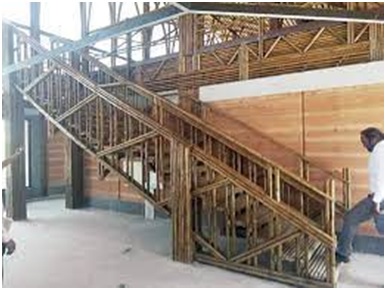Bamboo has been widely known as a sustainable building material due to some reasons among others are bamboo can be easily cultivated and harvested in a relatively short time and can be reused. Bamboo as building materials is also easy to bend. These characters are very suitable for organically shaped building construction. Due to global warming and sustainability issues emerging, bamboo as building materials is widely discussed and reviewed. Bamboo can be harvested in a short time, which is between 3-5 years. Bamboo also releases oxygen into the air, an ability that cannot be performed by industrial materials. For these reasons, bamboo has been widely known as a sustainable building material.
An office made completely of bamboo, for Rs 88.8 crore and in an area of 9 hectares, will soon see the light of day at Chichpalli, just 30km away from the fort city of Chandrapur. The G+1 construction, which will be the new office of Bamboo and Training Center (BRTC), will be one of the largest bamboo-made constructions in the world. Green Rating for Integrated Habitat Building (GRIHA) has marked the project as an exemplary sustainable building.
The use of bamboo for the building;

- The administrative building and all four blocks of the academic building and roof of the ground floor is entirely made of engineered bamboo wood.
- There has been very minimal use of concrete in the building
- Balcoa bamboo (100mm diameter) from northeast and Stocksii bamboo (50mm diameter) from Sindhudurg has been used in the building
- Every lot of bamboo is treated and goes under tensile strength test before being used
- The roofs are made by amalgamated layers of bamboo mats
- CPVC sheets, bitumen sheets and shingles while joints in the building are combined together by using epoxy-coated MS Plates
- The entire building has been coated with fire retardant polish for safety
SHIFT Architecture has made the design of the building and it has been checked and approved by Dr. Prem Krishna of IIT Bombay.
Source – Times of India

